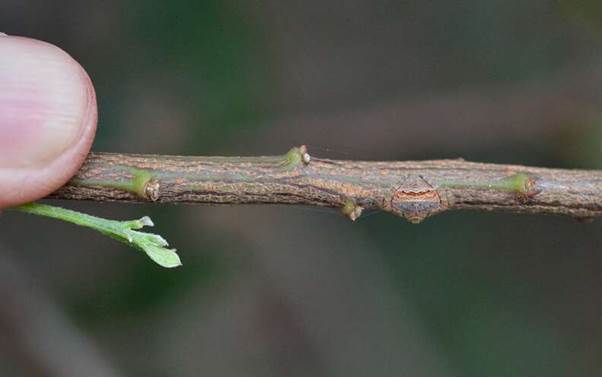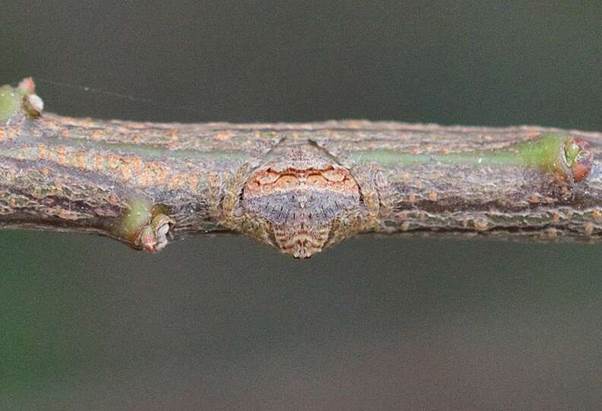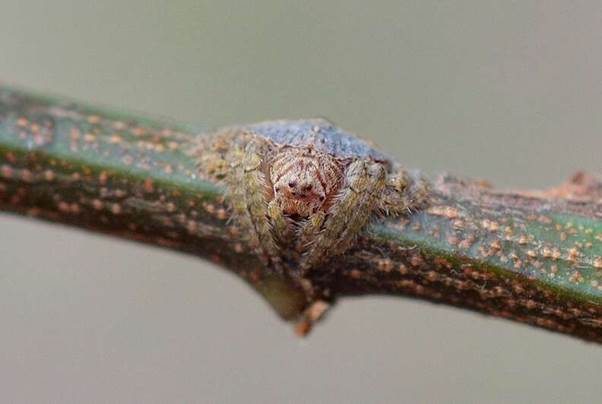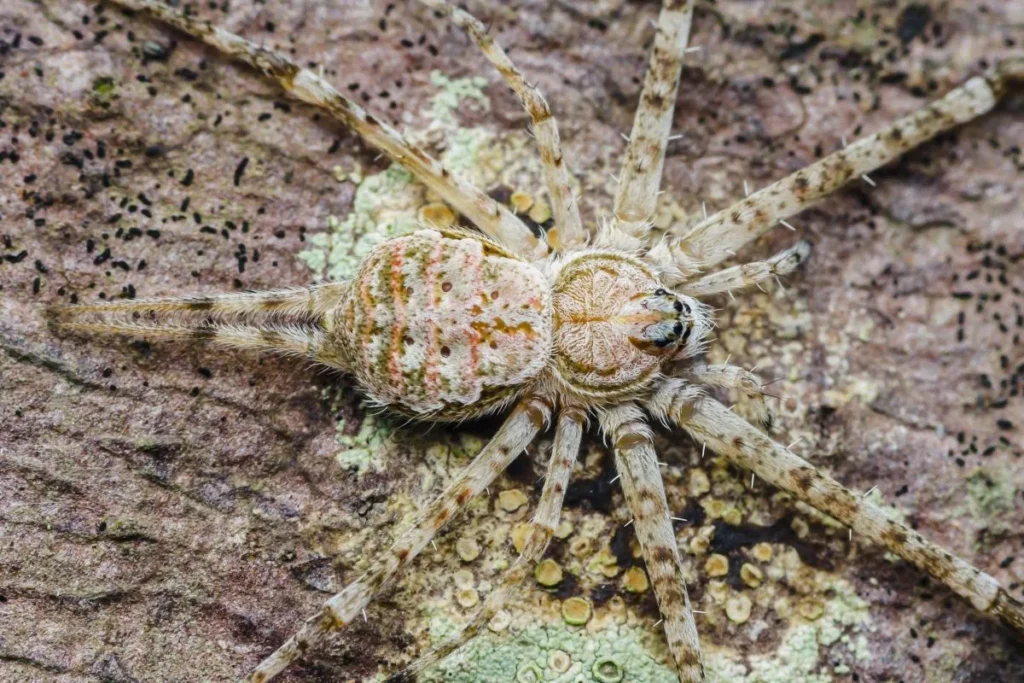A Walk with a Purpose
For most people, a leisurely walk through the trees is a chance to soak in the sunshine, listen to birdsong, or admire wildflowers. But for Ian Wallace, a dedicated spider enthusiast wandering through Raymond Island in Eastern Victoria, Australia, the goal was very different.
While many people might recoil at the thought of getting close to spiders, Wallace actively seeks them out. For him, spiders aren’t creepy — they’re fascinating creatures that reveal the mysteries of survival and adaptation. Each outing is like a treasure hunt, with the hope of spotting species that blend so seamlessly into their environment they’re nearly invisible to the untrained eye.
On this particular day, his sharp eyes noticed something unusual — a small bump on a branch that didn’t quite belong. For someone else, it might have been nothing more than part of the tree. But Wallace had a hunch, and that curiosity led him to one of nature’s most skillful illusionists.

Meeting the Wrap-Around Spider
As Wallace leaned in, his suspicion was confirmed: perched against the branch was a wrap-around spider, a creature so perfectly camouflaged that even seasoned hikers could pass it by without ever noticing.
Unlike other spiders that weave webs between branches or settle into corners, wrap-around spiders use their own bodies as the ultimate disguise. They press themselves flat against branches, curving gently so that their form blends with the bark. Their patterns and colors mimic the wood almost exactly, making them appear like nothing more than an irregular knot in the tree.
“I always pay close attention to any bumps on branches,” Wallace explained. “Sure enough, this time, that bump was alive. When I looked closely, I saw the delicate outline of the spider wrapped snugly around the twig.”
For Wallace, it wasn’t just an exciting discovery — it was a chance to marvel at how far evolution had gone to protect such a tiny creature.

A Masterclass in Camouflage
The spider remained completely still, relying on its disguise rather than speed or aggression. From just a few feet away, it was almost impossible to tell where the bark ended and the spider began.
Wallace took out his camera and carefully captured the moment. The photographs revealed just how flawless the camouflage really was. The spider’s colors matched the tree perfectly, from its earthy tones to the slight irregularities in its body that mimicked bark texture.
What fascinated Wallace most wasn’t just the visual trick but the patience of the spider. While some creatures rely on sudden movements or defensive behavior, the wrap-around spider’s entire survival depends on trust — trust in its disguise, trust that predators will overlook it, and trust that even curious humans won’t disturb it.
“He didn’t move at all,” Wallace recalled. “It was almost as if he knew that staying still was the safest thing to do.”
That quiet confidence, that ability to fade into the background and remain undetected, is what makes the wrap-around spider one of Australia’s most remarkable arachnids.

A Gentle Goodbye and a Bigger Lesson
After spending several minutes with his camouflaged friend, Wallace decided it was best to leave the spider undisturbed. He continued his walk, scanning other branches for new encounters, but the experience lingered in his mind.
For him, this wasn’t just another sighting — it was a reminder of the delicate balance between humans and the natural world. Many people fear spiders, but Wallace sees them as essential teachers. They remind us that survival doesn’t always mean being the fastest, strongest, or most aggressive. Sometimes it means knowing how to quietly exist, to blend in, and to adapt in ways that ensure safety without confrontation.
As he reviewed his photographs later, Wallace reflected on how many wrap-around spiders must go unseen each day. They sit quietly on branches, overlooked but thriving, hidden in plain sight. Without enthusiasts like Wallace, most of us would never realize such creatures even exist — and yet they play an important role in the ecosystem, keeping insect populations in check and maintaining the balance of forest life.
“Finding him made my day,” Wallace admitted. “It’s moments like these that remind me how extraordinary even the smallest creatures can be.”The wrap-around spider may not inspire the same awe as a kangaroo bounding across the plains or a colorful parrot soaring overhead, but in its own quiet way, it demonstrates the brilliance of nature’s creativity. Its disguise is more than just protection — it’s an art form perfected over generations of evolution.
Thanks to people like Ian Wallace, who look closer instead of looking away, we’re reminded that the world is full of wonders hiding right before our eyes. All it takes is patience, curiosity, and a willingness to see beauty where others might see nothing at all.
So the next time you’re walking in the woods and spot a strange bump on a branch, take a closer look. You might just discover one of nature’s greatest masters of disguise — a tiny spider who knows better than anyone how to disappear in plain sight.


